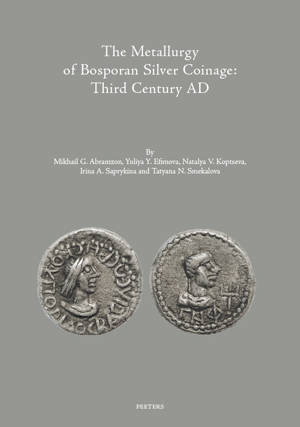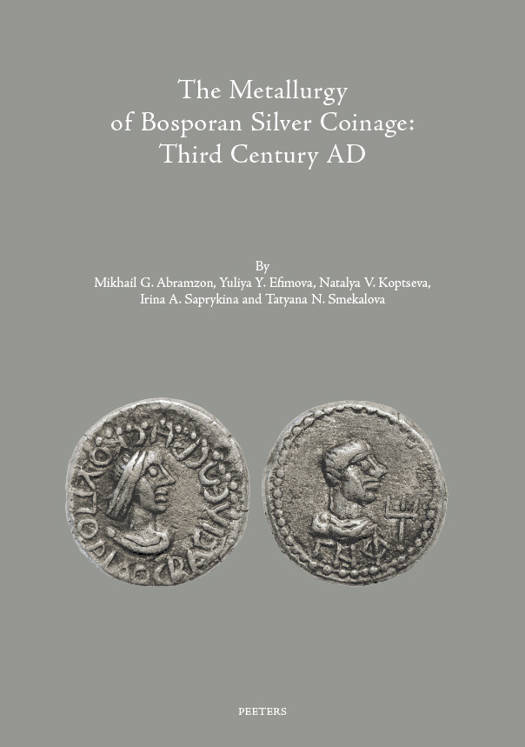
- Afhalen na 1 uur in een winkel met voorraad
- Gratis thuislevering in België vanaf € 30
- Ruim aanbod met 7 miljoen producten
- Afhalen na 1 uur in een winkel met voorraad
- Gratis thuislevering in België vanaf € 30
- Ruim aanbod met 7 miljoen producten
Zoeken
The Metallurgy of Bosporan Silver Coinage
Third Century AD
M G Abramzon, Y Y Efimova, N V Koptseva, I A Saprynkina, T N Smekalova
€ 87,00
+ 174 punten
Omschrijving
Within the historical background of the 3rd century AD, the study of Bosporan coin production is of especial interest. The turbulent events in the Roman empire and the northern Black Sea region called forth by pressure from nomadic peoples led to parallel progressive debasement of the antoninianus and Bosporan stater. This book explores the composition of Bosporan silver coinage of the 3rd century AD, re-examining traditional interpretations in the light of an entirely new programme of analyses of the coins, and thereby illustratating the inadequacy of small earlier analytical studies. The results of the examination of ca. 3000 staters from quite a number of Bosporan hoards, conducted in 2016-21 by the methods of XRF, EPMA, NRCA, FIB-FESEM-EDX, SEM-EDX, MC-ICP-MS lead isotope analysis, etc., have enabled a comprehensive understanding of the nature of Bosporan silver coinage, especially silvering techniques, in the 3rd century. The data of microchemical and metallurgical studies of coins indicate that from AD 227/8 to 286/7 (with interruptions), staters from silver or those containing some amounts of silver (and occasionally some amount of gold) were struck on the Bosporus. During this period, debasement of the Bosporan stater was occurring, transforming it from an electrum coin into silver and billon one (issued for almost 40 years - until AD 267/8) and, finally (since AD 275), to a copper coin with silver content of about 4-6% and coated with silver.
Specificaties
Betrokkenen
- Auteur(s):
- Uitgeverij:
Inhoud
- Aantal bladzijden:
- 181
- Taal:
- Engels
- Reeks:
- Reeksnummer:
- nr. 37
Eigenschappen
- Productcode (EAN):
- 9789042949300
- Verschijningsdatum:
- 22/08/2023
- Uitvoering:
- Hardcover
- Formaat:
- Genaaid
- Afmetingen:
- 215 mm x 300 mm
- Gewicht:
- 1016 g

Alleen bij Standaard Boekhandel
+ 174 punten op je klantenkaart van Standaard Boekhandel
Beoordelingen
We publiceren alleen reviews die voldoen aan de voorwaarden voor reviews. Bekijk onze voorwaarden voor reviews.











